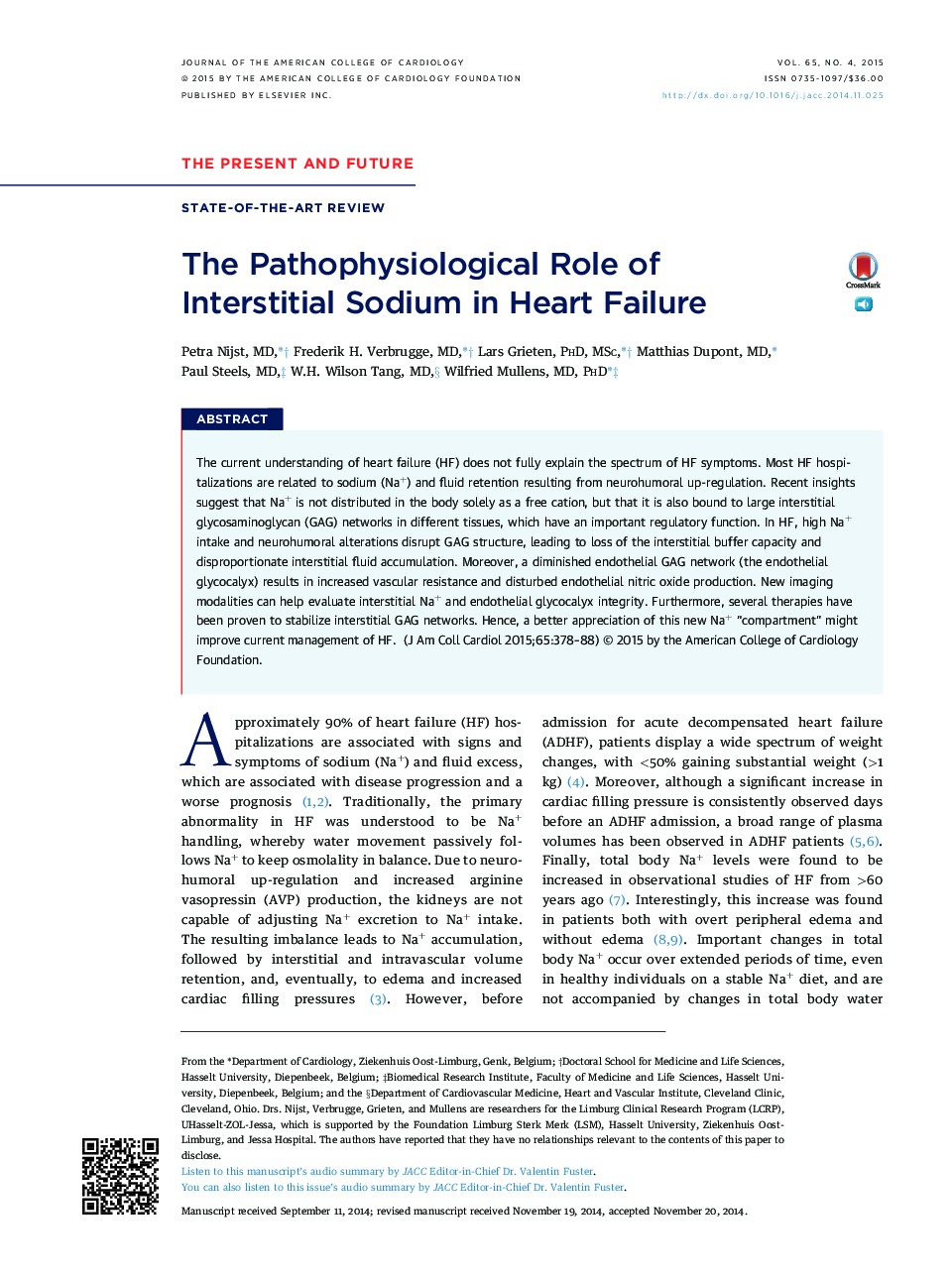| Article ID | Journal | Published Year | Pages | File Type |
|---|---|---|---|---|
| 5982653 | Journal of the American College of Cardiology | 2015 | 11 Pages |
The current understanding of heart failure (HF) does not fully explain the spectrum of HF symptoms. Most HF hospitalizations are related to sodium (Na+) and fluid retention resulting from neurohumoral up-regulation. Recent insights suggest that Na+ is not distributed in the body solely as a free cation, but that it is also bound to large interstitial glycosaminoglycan (GAG) networks in different tissues, which have an important regulatory function. In HF, high Na+ intake and neurohumoral alterations disrupt GAG structure, leading to loss of the interstitial buffer capacity and disproportionate interstitial fluid accumulation. Moreover, a diminished endothelial GAG network (the endothelial glycocalyx) results in increased vascular resistance and disturbed endothelial nitric oxide production. New imaging modalities can help evaluate interstitial Na+ and endothelial glycocalyx integrity. Furthermore, several therapies have been proven to stabilize interstitial GAG networks. Hence, a better appreciation of this new Na+ “compartment” might improve current management of HF.
